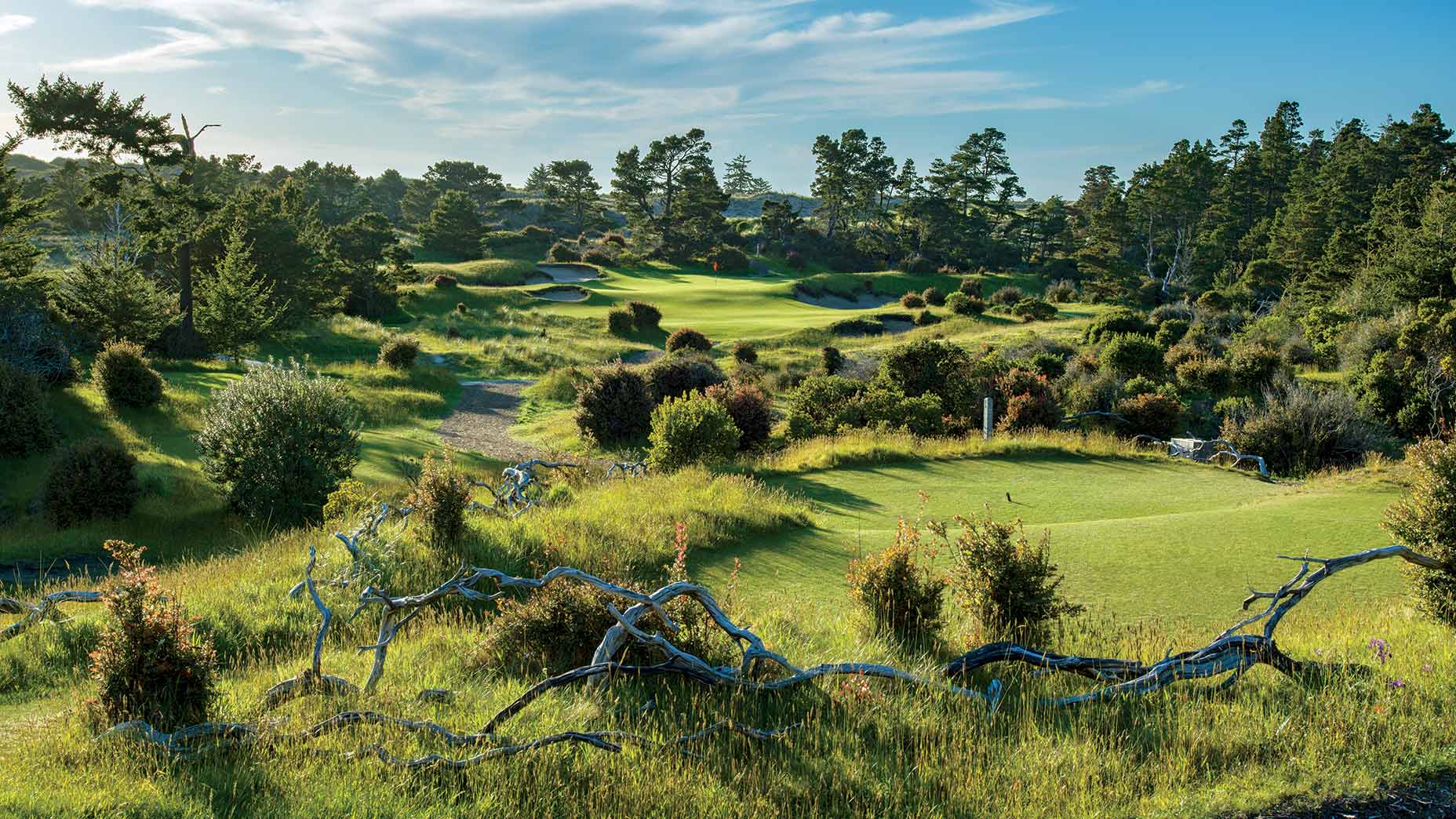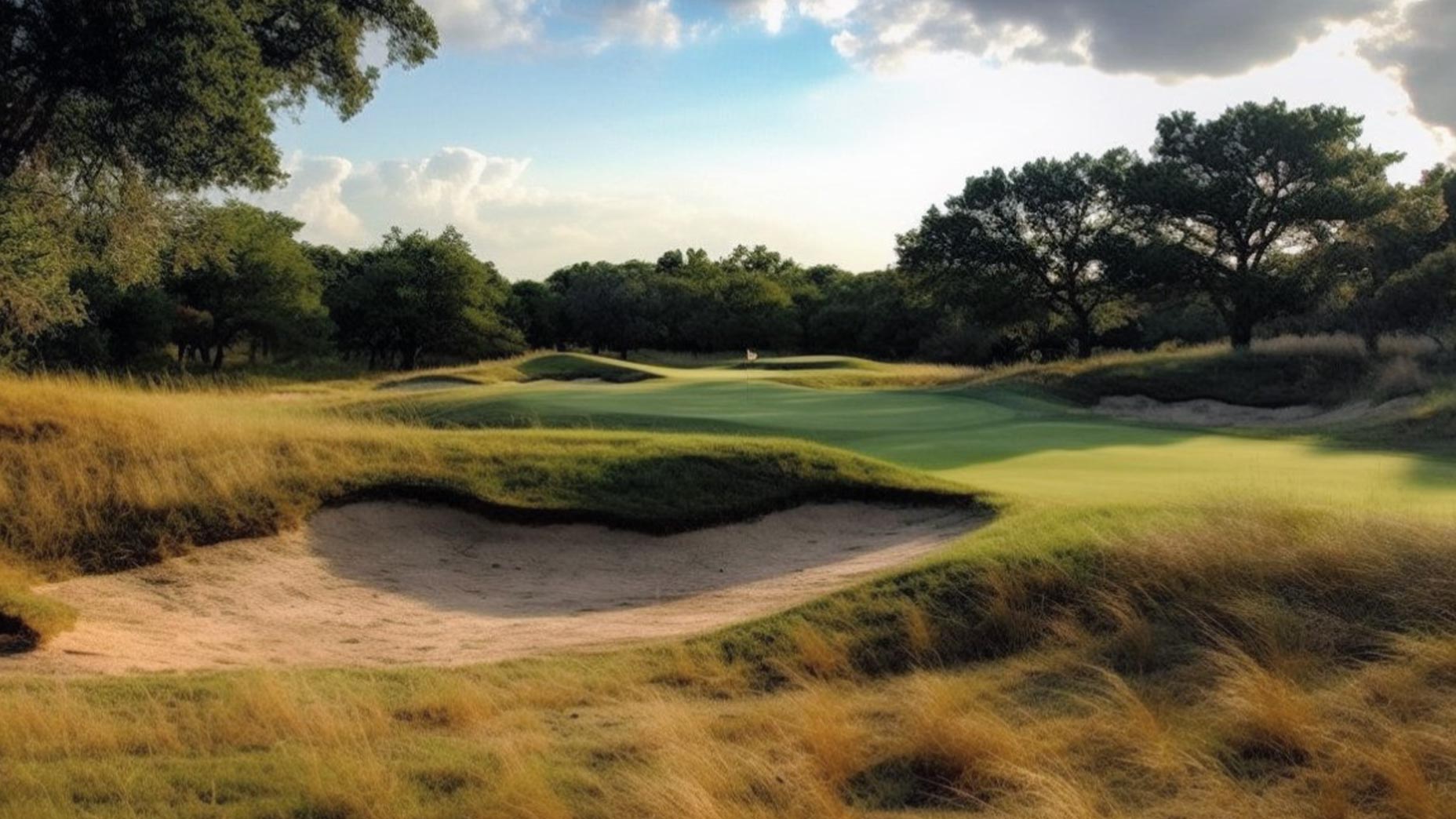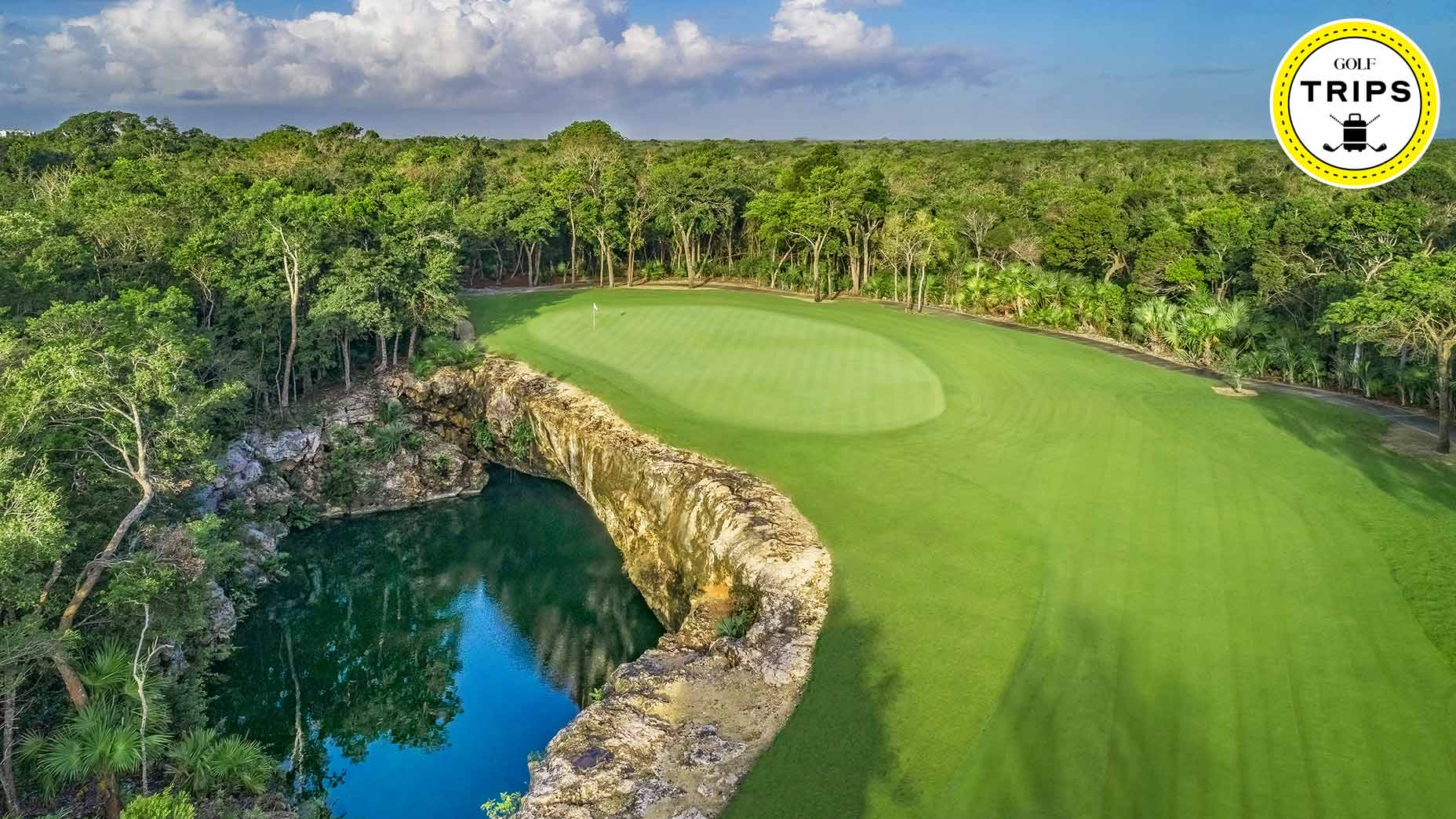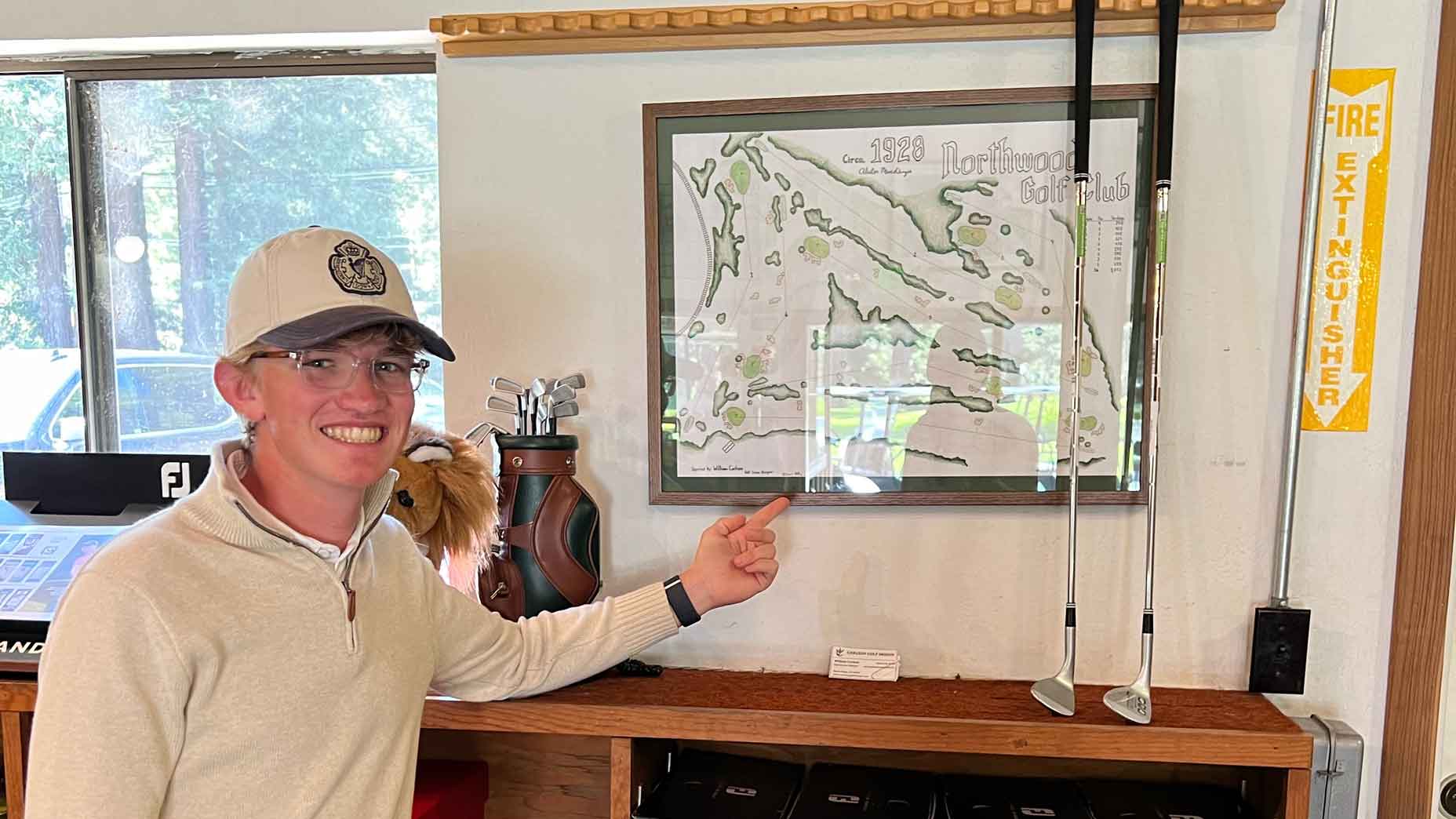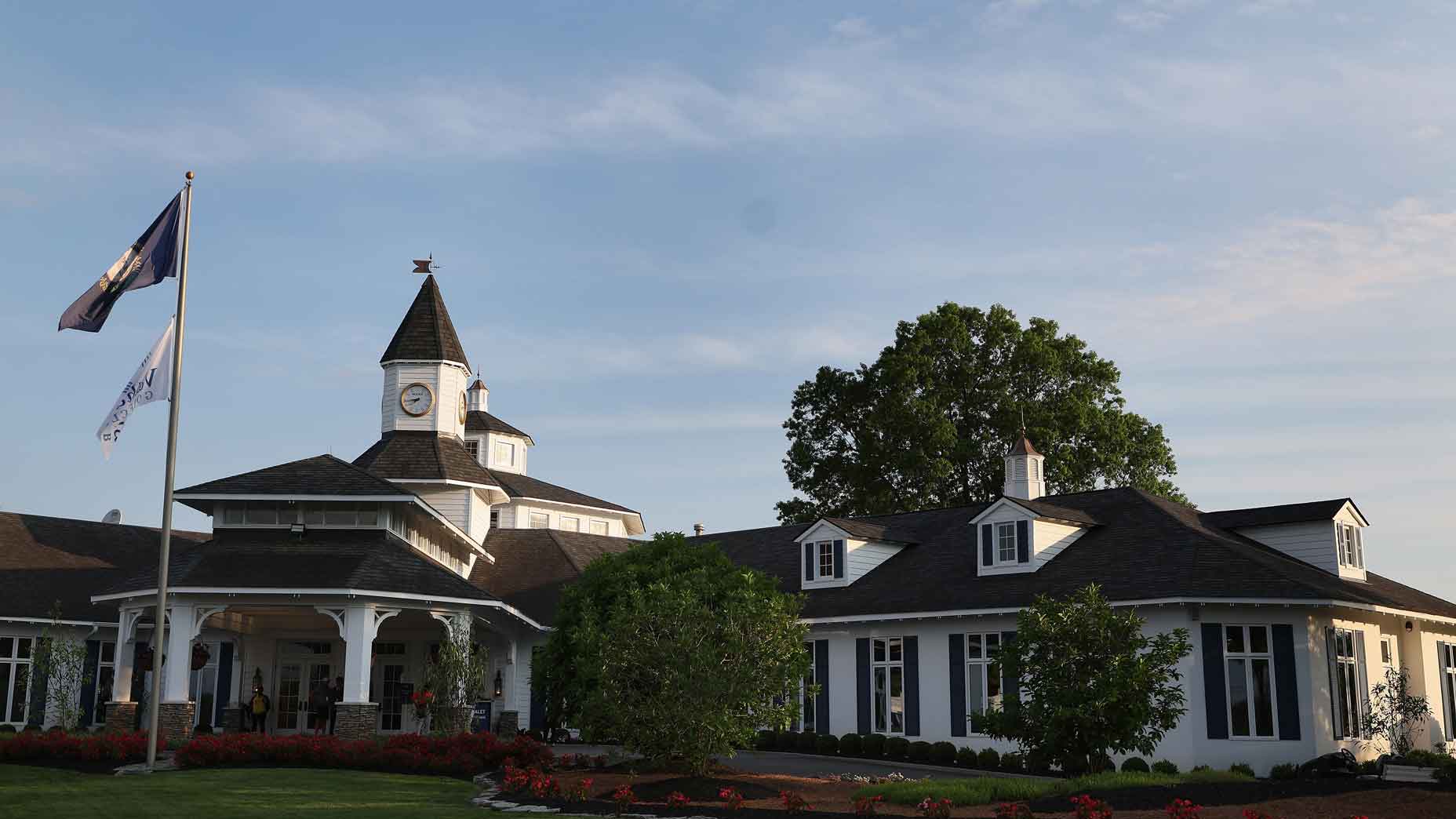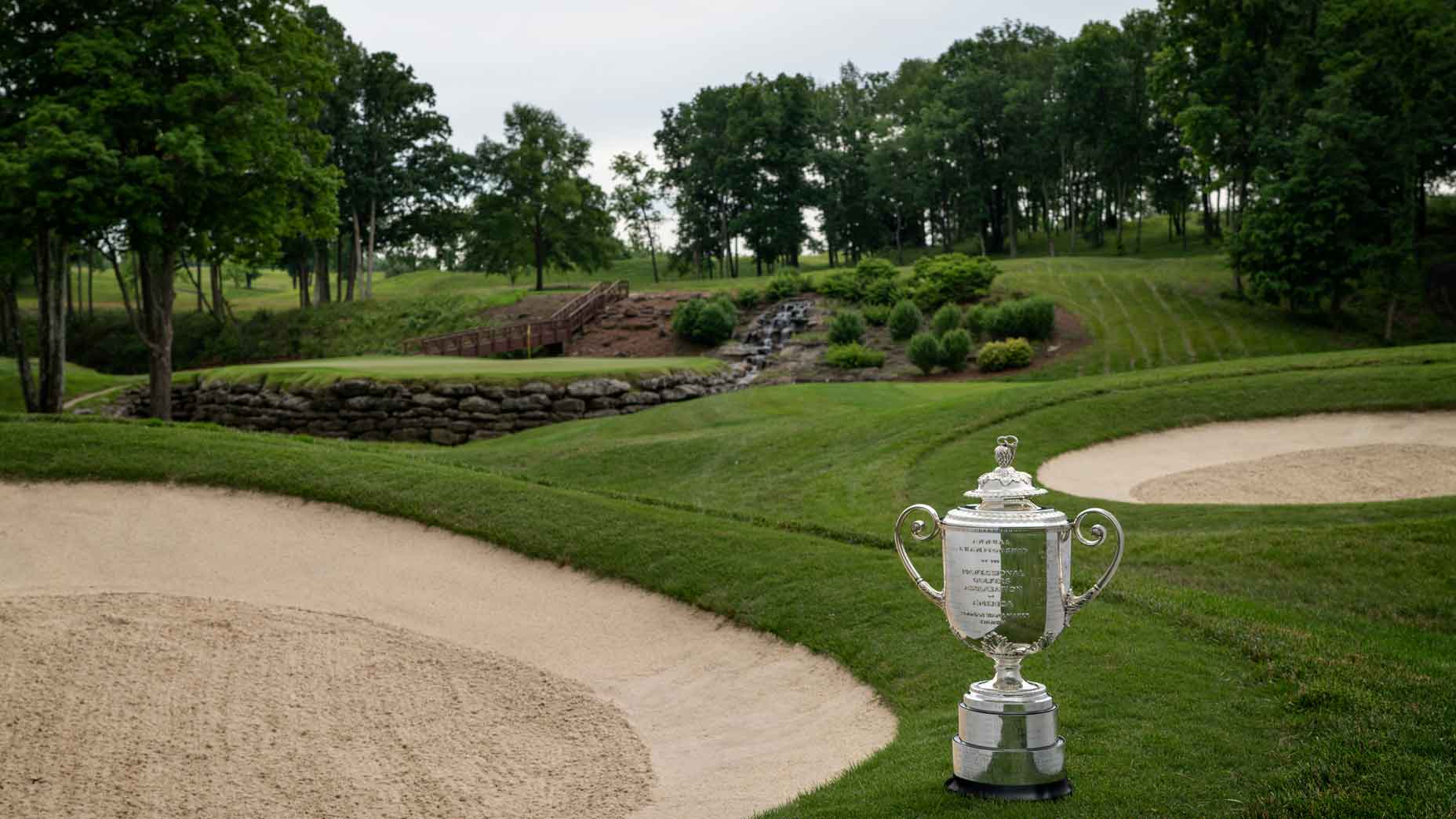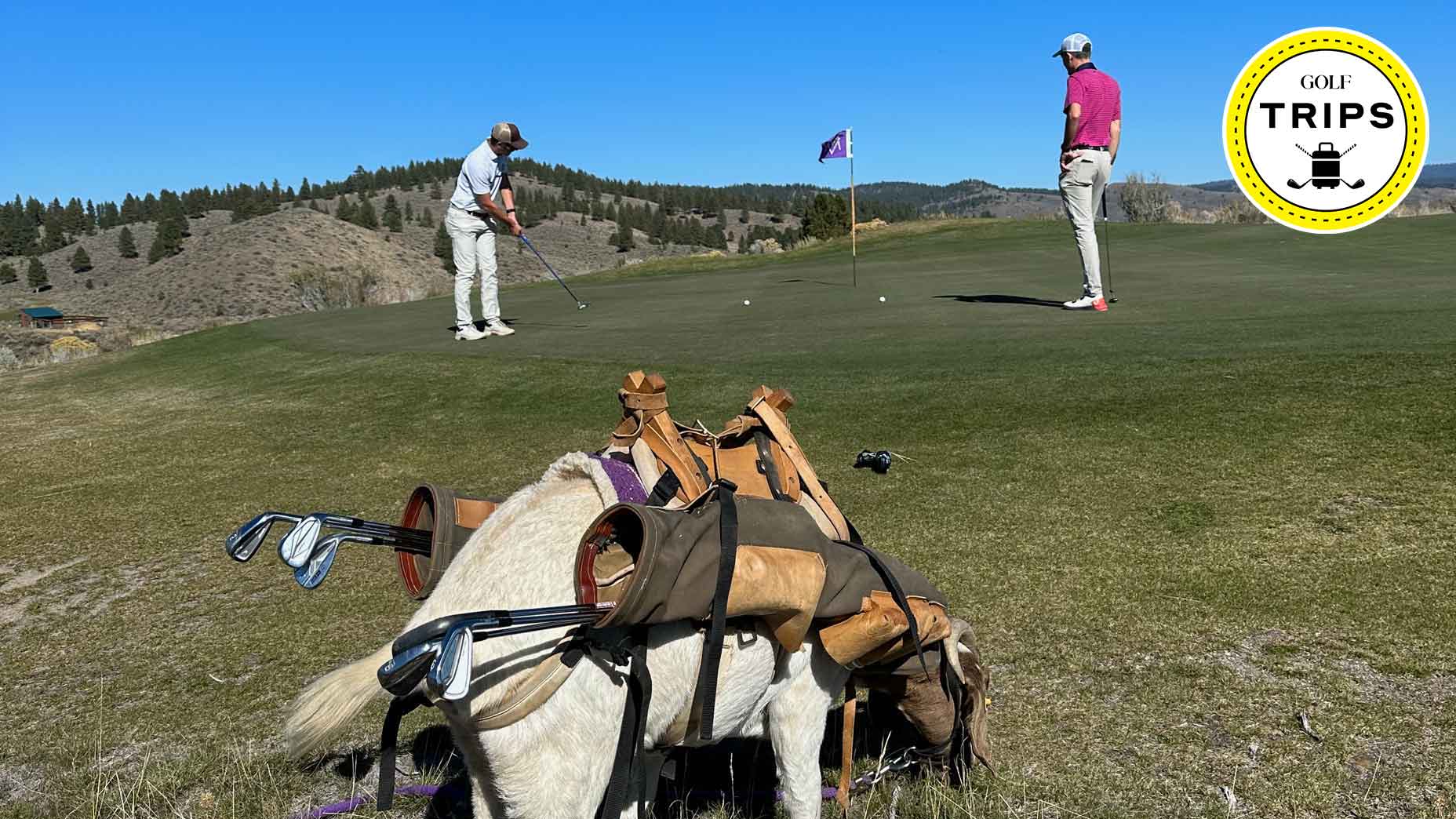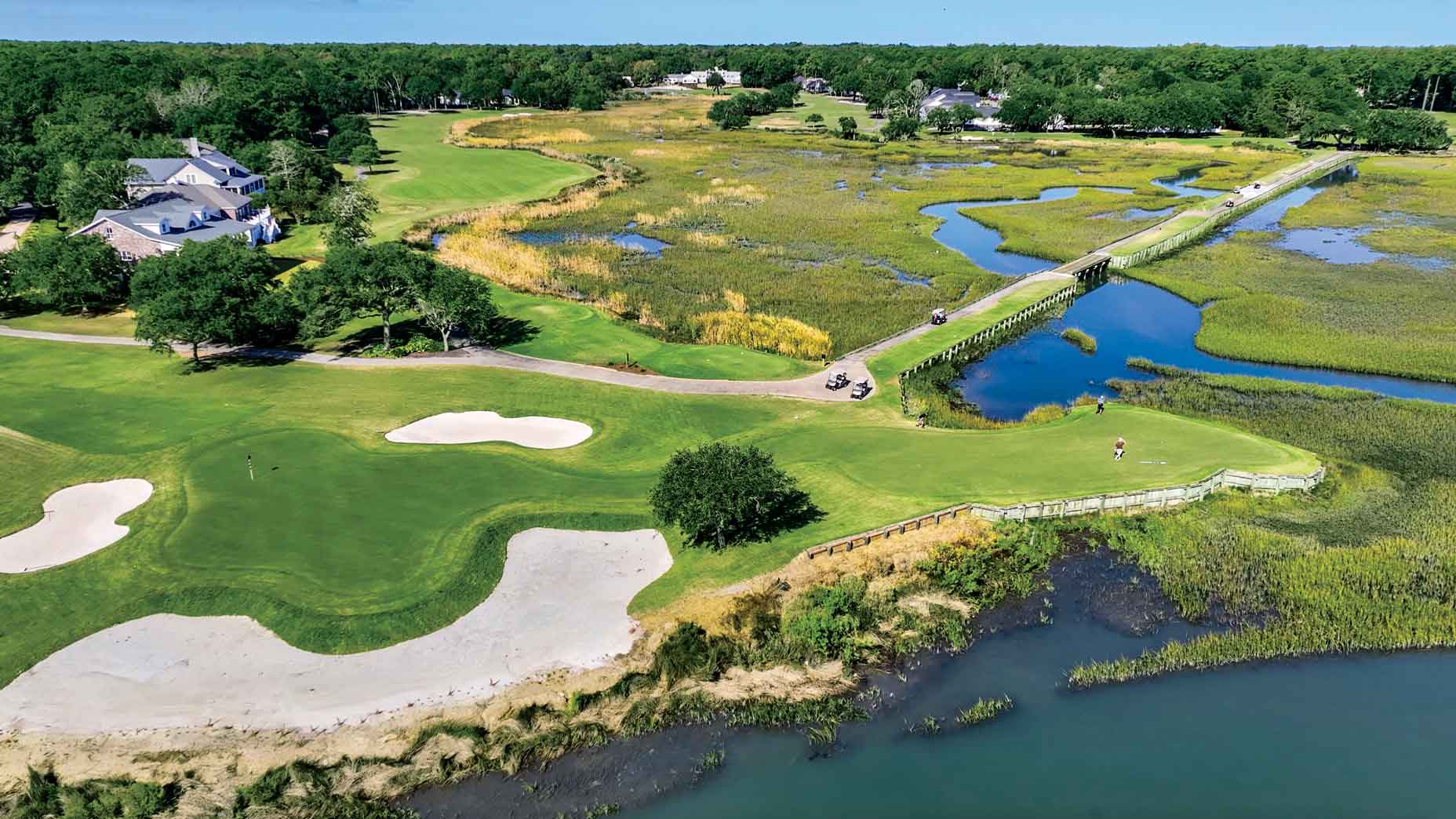Bandon Dunes at 25: The groundbreaking Oregon resort keeps getting bigger (and better)

Bandon Dunes, the original course at Bandon Dunes Golf Resort, opened 25 years ago this month.
Evan Schiller
Let’s take a trip in the wayback machine to a long ago gray morning on the Oregon coast: May 2, 1999. A light rain is falling. A brisk breeze is blowing off the water. And a 2-iron of a man named Mike Keiser is greeting golfers on the first tee of a rugged-looking layout, gifting everyone he meets with a commemorative coin. Each marker bears the image of a tufted puffin, a logo that will grow into an icon.
It’s opening day at Bandon Dunes.
Given the way things are in recreational golf today, it’s easy to forget how different things were then, and how sharply Bandon broke from what had come before it.
For decades, public access courses in this country had largely been developed as real estate plays or lush amenities to frill-filled resorts close to major population centers. Golfers buzzed around in carts and lost balls by the box load. Errant shots that didn’t land in artificial lakes risked smashing the windows of neighboring homes.

In Keiser’s eyes, this was not golf as it was meant to be or anything like what he aimed to create. With a fortune earned in recycled greeting cards and a vision shaped by golf trips to Ireland and Scotland, he’d set out to revive the game’s rustic, windswept spirit in a market that had stifled it with waterfalls and buggies. To realize his dream, he’d further shirked convention by acquiring seaside land in an outlier location, a few miles north of the sleepy town of Bandon, Ore., and hiring as his designer a young, untested Scotsman named David McLay Kidd.
“I was full of piss and vinegar at the time,” McLay Kidd says. “But aside from confidence, I didn’t have a lot to show for myself.”
Keiser wasn’t shy on self belief, either. But in quieter moments, he couldn’t help but wonder if the skeptics — and there were many — might be right about walking-only golf exposed to coastal elements on a course situated at the edge of nowhere. He was going to build it, but would anybody come?
The answer arrived sooner than expected. Of the 144 golfers invited to the ribbon cutting, 25 years ago this month, there was only one no-show in the dreary weather. The reviews were glowing, in person and in print. Afforded a sneak peek, GOLF magazine described the land as “the finest made available for a golf course in America since Alister MacKenzie was shown the site for the Cypress Point.” In another publication, a giddy scribe confessed that the course gave him the urge to sprint down the fairways naked. He meant that in a good way.

The point was that Bandon had awakened something primal. It had taken the old and made it new again, meeting a demand for a throwback form of golf that had been ignored for so long that people had forgotten it even existed.
In that first year, Keiser hoped the course would draw 10,000 rounds, a number he figured he needed to break even; it wound up registering 25,000.
“After that full tee sheet on opening day, I was optimistic,” Keiser says now. “But after that first year, I was absolutely astonished.”
And clear in his conviction that a single course was not enough. “One plus one equals three” was Keiser’s formulation (even his approach to simple math was different), the idea being that a second layout would bring exponential benefits to the resort. As most avid golfers know, Bandon today is home not to two but five 18-hole courses (Bandon Dunes, Pacific Dunes, Bandon Trails, Old Macdonald and Sheep Ranch) and a par-3 course (Bandon Preserve) with another short course (Shorty’s) set to open this month. Among the striking features of that growth is how faithful the resort has stayed to its founding ethos: that great golf doesn’t require fancy extras. Even if wagyu beef has joined “Grandma’s meat loaf” among the menu items, everything at Bandon revolves around the game and the fellowship, fresh air and challenge that come with it. You can book a massage, but you can’t hit the spa because there isn’t one. Most guests rise at daybreak, play until exhaustion, then get up the next morning and do it again.
Meanwhile, beyond its property lines, Bandon has inspired profound change. In a once-flagging region whose two main industries — fishing and logging — had sputtered, the resort has become a vital economic engine, the second-largest employer in the county, after the hospital system. And then there is its impact on the game itself.
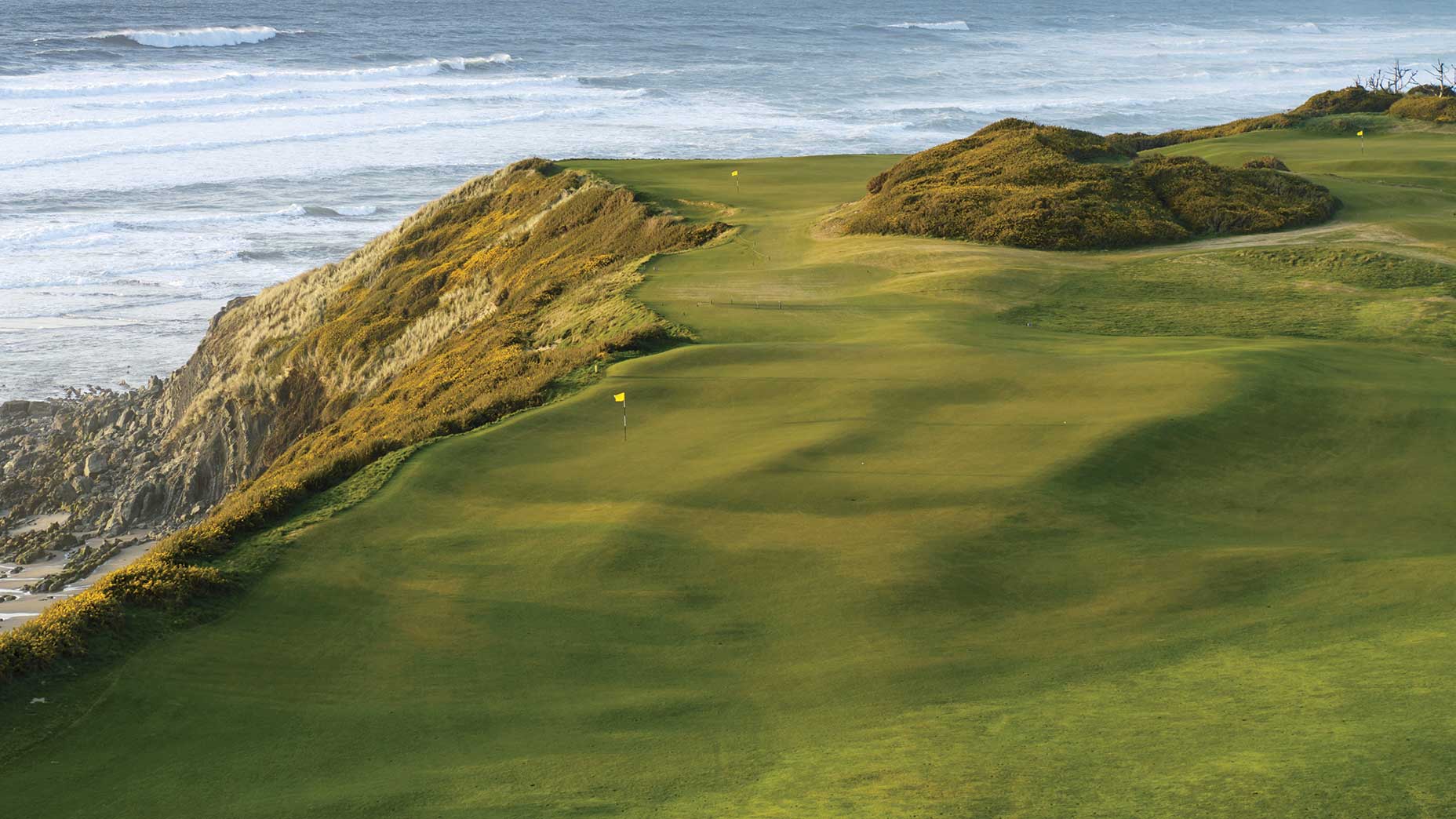
Even as it broke a mold, Bandon offered a fresh template for “destination” golf. That world-class courses now extend from the sand barrens of Wisconsin and the shores of Nova Scotia to Saint Lucia, Tasmania, Norway and beyond owes largely to a pioneering project on the Oregon coast.
“It flipped everything,” says the architect Bill Coore, who, with his design partner, Ben Crenshaw, had a hand in many of those courses, including three at Bandon. “We take it for granted these days that if you find a great site and build great golf on it, golfers will come see it, no matter how far they have to go. But if you said that before Bandon, a lot of people would have said you’d lost your mind.”
As Bandon now prepares to mark a major anniversary, it is also getting ready for another ribbon cutting at its new 19-hole par-3 course Shorty’s. What the weather has in store is anyone’s guess. But this much is certain: A large crowd of Bandon loyalists will be on hand. So will Mike Keiser, greeting guests and handing out commemorative coins.
“Has it really been 25 years?” Keiser says. “To me, it actually feels like we’ve been around much longer.”
No wonder, really. Bandon fits so naturally into the landscape, it almost seems to have been there from the start.

